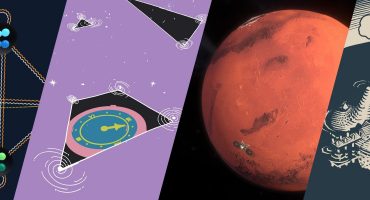Amy Scott-Murray takes us behind the scenes at the Natural History Museum in London to share how they digitised the skeleton of Hope the blue whale.
I’m Amy Scott-Murray and I look after the 3D Visualisation Lab at the Natural History Museum in London. My lab works with laser and structured light surface scanning, and it’s one part of NHM’s Imaging and Analysis Centre where we work with a huge range of techniques for imaging and investigating natural specimens. At NHM, 3D digitisation is a vital part of our research scientists’ work. We collect 3D data using micro-CT, confocal microscopy, electron microscopy and surface scanning, with the choice of method depending on the type of specimen and the end use of the dataset.
Surface scanning is the newest of these techniques to be added to the Museum’s repertoire. The first project we ever undertook is never likely to be surpassed as our biggest! Hope the blue whale was removed from her previous display position in our Mammals Hall and became the centrepiece of our major Hintze Hall redevelopment project, which opened in July 2017.

Hope the blue whale in place in Hintze Hall. © Trustees of the Natural History Museum, London
Suspended several metres above the ground, however, she is not readily accessible to researchers. We therefore took advantage of the move to surface scan each bone individually, giving us a full digital surrogate specimen which we can securely archive and use for research and outreach.
Two of the Museum’s scanning specialists, Kate Burton and Brett Clark, used our Faro Edge laser and our Creaform GoScan handheld structured light scanner to methodically work through all 166 bones. During its time at ground level the skeleton was also professionally cleaned by our conservation team, and then had a new armature (metal frame) built to display her in her new dynamic feeding pose. This meant that the scanning team had only a very small time window between these other phases to complete their work. They had to prioritise data collection and leave the processing stages until afterwards, meaning that they had to be very confident that nothing was missed out!

A whale rib ready for structured light scanning. © Trustees of the Natural History Museum, London
Physically handling the large bones was another challenging factor, with the largest vertebrae and ribs needing two or three trained people to safely maneuver them. Kate and Brett, together with the Museum’s dedicated conservation team, deserve huge credit for their hard work on this project.

One of the smallest bones from the tail about to be scanned using our high precision Faro Edge laser arm. © Trustees of the Natural History Museum, London
The three largest bones – the cranium and two jaw bones – were too large for our own equipment so they were scanned using different processes by our equipment suppliers, Faro and Creaform.

Staff from Measurement Solutions UK scanning the blue whale cranium. © Trustees of the Natural History Museum, London
Our aim was to document the skeleton exactly as it was at that moment in time. We decided to record any damaged areas or historic repairs exactly as they were, and not to digitally restore them. This means that the scans will be useful not only for biological research but also for monitoring any future deterioration in the skeleton’s condition.
The high resolution dataset created during this scanning process will be invaluable to current and future scientific researchers, but is too detailed to be displayed in full on most computers. For this reason, the model we uploaded to Sketchfab is the result of a lidar scan made by outside contractors. This type of scan results in a lower resolution model but one that is correctly posed as a full skeleton. The geometry was beautifully optimized and painted with realistic textures by Mieke Roth who works as a contractor on 3D scientific illustration projects.

Part of a thoracic vertebra, showing the level of detail in our full resolution laser scans and a repaired portion of the bone. © Trustees of the Natural History Museum, London
My advice to anybody interested in working with 3D digitisation is to look into the many amazing free or low cost photogrammetry apps and programs that are available. Sophisticated scanner hardware certainly makes the work much faster and more reliable, but surprisingly good results are possible using a basic camera and some patience. Heinrich Mallison’s excellent blog is full of useful information.
In future it will become possible for an interested person to engage with museum collections online to a much greater extent. The challenge for museums then will be to integrate this digital presence with their real-life visitor experience so that each complements the other without substituting for it.
You can follow our Sketchfab channel, our Twitter feed, our Instagram and our Facebook page.



